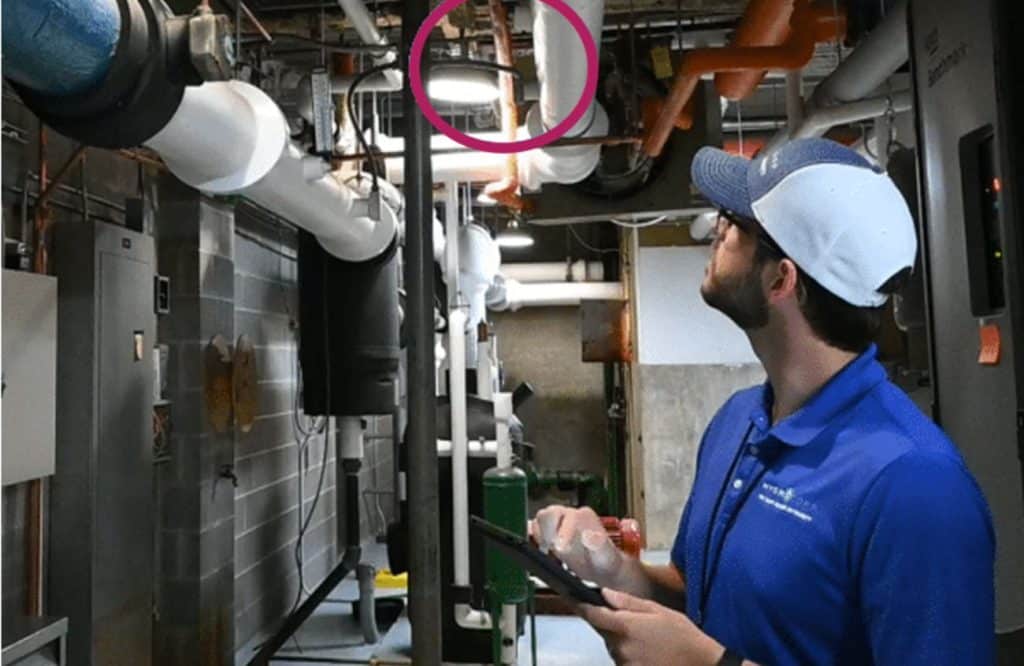By Gary McLaren, HydroCorp
For years, public water systems in Michigan have been required to implement a comprehensive cross-connection control program to protect the public water supply from the hazards of unprotected cross-connections and backflow events. Many communities prioritized non-residential water customers when they started the program, due to the typically higher hazard risk. However, we’re now seeing more and more communities implement the residential portion of the program.
And for some communities, the challenges can be daunting.
The key component of this mandatory safety programs onsite visual inspections, coordinated by the local public water purveyor. These inspections – also referred to as cross-connection surveys – help identify and rectify unprotected hazards connected to home or facility potable water piping.
Public water systems with sufficient staff can perform the program tasks – public notices, scheduling, site inspections, data management, customer inquiry response, and more. However, other communities choose to outsource these responsibilities to a contractor specializing in program management. In either case, there is a budget that must be allocated for the program, and the water purveyor must be able to account for the program’s implementation. These programs mainly address commercial, industrial, and public authority type buildings connected to the water supply system.
What About Residential Surveys?
The second-tier phase of cross-connection control focuses on residential water customers connected to the public water supply. Because statewide regulations prohibiting cross-connections apply to all building types, implementing a residential program is also mandatory. A typical response from some public water systems is: “What? That will be impossible!”And a typical response from homeowners learning of the new program is: “Inspect my home for cross-connections? What does that even mean?”
Taking on residential cross-connection inspections may seem overwhelming for water systems already overburdened and understaffed. The sheer number of inspections is a challenge because there are typically many more residential than non-residential water users. Add the tasks of coordinating access with homeowners, sending postal notices, ensuring homeowner compliance, conducting the surveys, tracking and managing the data…you can see how the whole thing can seem impossible.
There’s Another Way.
Comprehensive residential cross-connection control programs are achievable and have proven very effective in eliminating backflow hazards connected to drinking water piping in a home. Here’s an example…
Flashback to 2009. The northern city of Rhinelander, Wisconsin. Population 7,798. Home of the infamous Hodag. At the time, the state agency that regulates public water systems began to enforce an existing administrative rule for residential cross-connection control compliance. This meant that every home connected to a public water system in the State of Wisconsin had to have a cross-connection inspection performed, at least once every ten years.
The officials responsible for the water system in Rhinelander attended several cross-connection control training classes hosted by the regional Rural Water Association and American Waterworks Association. It was clear that a written plan was essential. The city then looked at all of the components and activities involved in the residential program. Three key areas are what they considered:
- Public education about residential cross-connections, via City website, water bill inserts, and local publications.
- Allocation of utility staff time for coordinating appointments and conducting inspections.
- Administration time for postal notification, fielding phone calls, and processing inspection data/compliance monitoring.
After approximating the number of personnel hours needed on an annual basis and looking at actual available staff time, city administrators sought an alternative approach they’d learned about during one of the cross-connection classes: outsourcing to a specialized contractor like HydroCorp.
Since then, many other communities across Wisconsin have complied with the state requirement for a residential cross-connection control program. Some choose to outsource, while others effectively adopt and continue to manage their own program and inspections.
The Keys to Success
- You don’t have to re-invent the wheel. Learn how other communities were successful in implementing residential cross-connection control.
- Be realistic about the actual costs, time, and personnel for all program details and activities.
- Invest in staff training for inspections and water customer service calls.
- Today is the best day to start educating water customers about cross-connection control. The more they understand the importance of backflow prevention in their homes, the easier your job will be.
Get more information about residential cross-connection control and how to get started. Please visit www.hydrocorpinc.com or contact us at info@hydrocorpinc.com. We‘ll be happy to answer any questions you may have.

